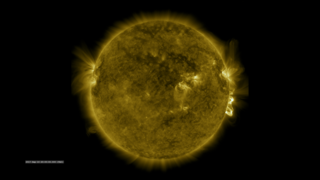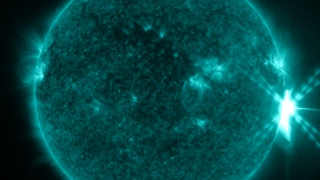Sun
ID: 12706
Active region 2673 emitted a series of flares in early September, 2017, including:
--an M5.5 at 4:33 p.m. EDT on Sept. 4, 2017
--an X2.2 at 5:10 a.m. EDT on Sept. 6, 2017
--an X9.3 at 8:02 a.m. EDT on Sept. 6, 2017
--an M7.3 at 6:15 a.m. EDT on Sept. 7, 2017
--an X1.3 at 10:36 a.m. EDT on Sept. 7, 2017
--an M8.1 at 3:49 a.m. EDT on Sept. 8, 2017
--an X8.2 at 12:47 p.m. EDT on Sept. 10, 2017
NASA’s Solar Dynamics Observatory, which watches the sun constantly, captured images of the events. Solar flares are powerful bursts of radiation. Harmful radiation from a flare cannot pass through Earth's atmosphere to physically affect humans on the ground, however — when intense enough — they can disturb the atmosphere in the layer where GPS and communications signals travel.
To see how this event may affect Earth, please visit NOAA's Space Weather Prediction Center at http://spaceweather.gov, the U.S. government's official source for space weather forecasts, alerts, watches and warnings.
X-class denotes the most intense flares, while the number provides more information about its strength. An X2 is twice as intense as an X1, an X3 is three times as intense, etc.
The X9.3 flare was the largest flare so far in the current solar cycle, the approximately 11-year-cycle during which the sun’s activity waxes and wanes. The current solar cycle began in December 2008, and is now decreasing in intensity and heading toward solar minimum. This is a phase when such eruptions on the sun are increasingly rare, but history has shown that they can nonetheless be intense.
September 10, X8.2
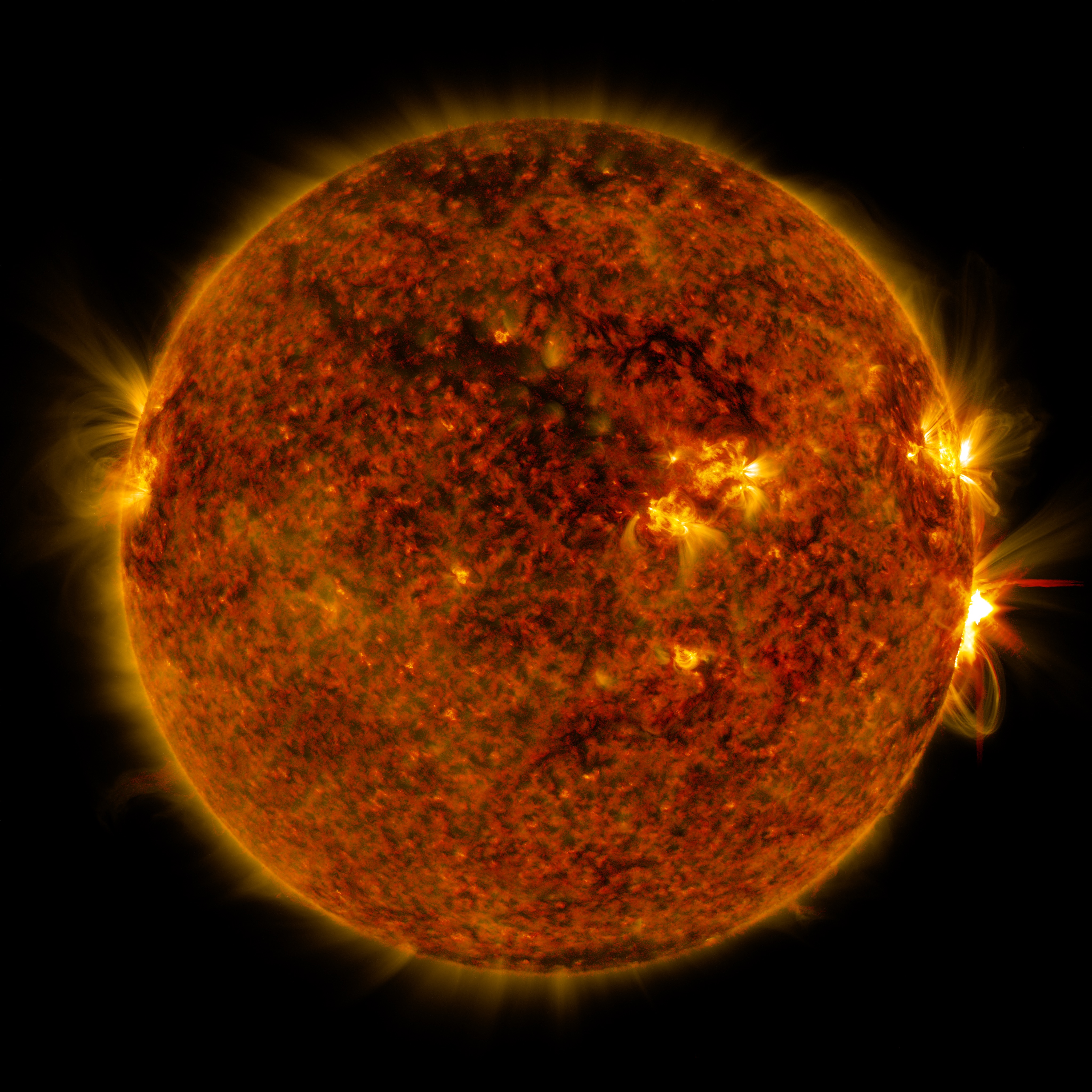
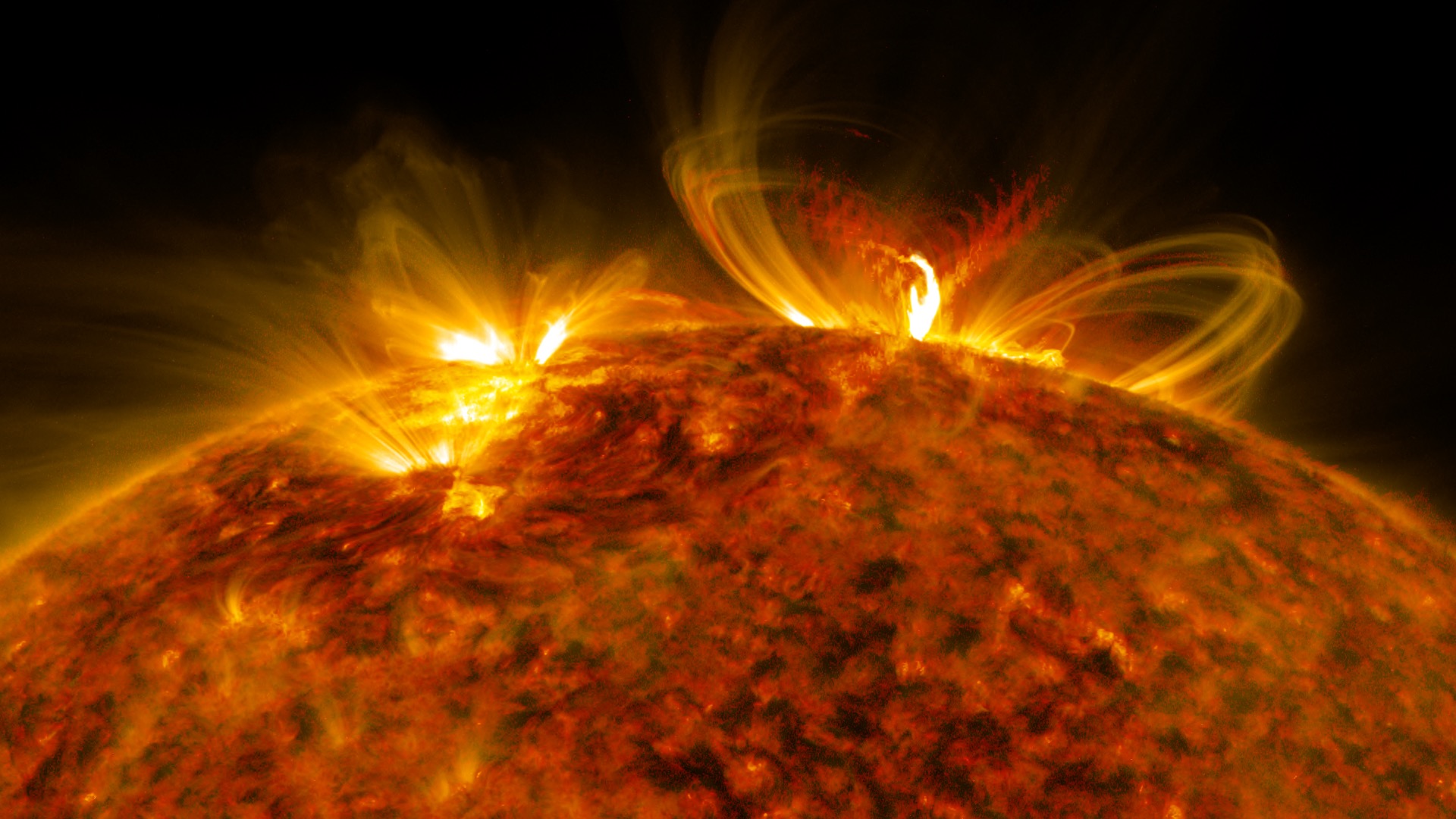
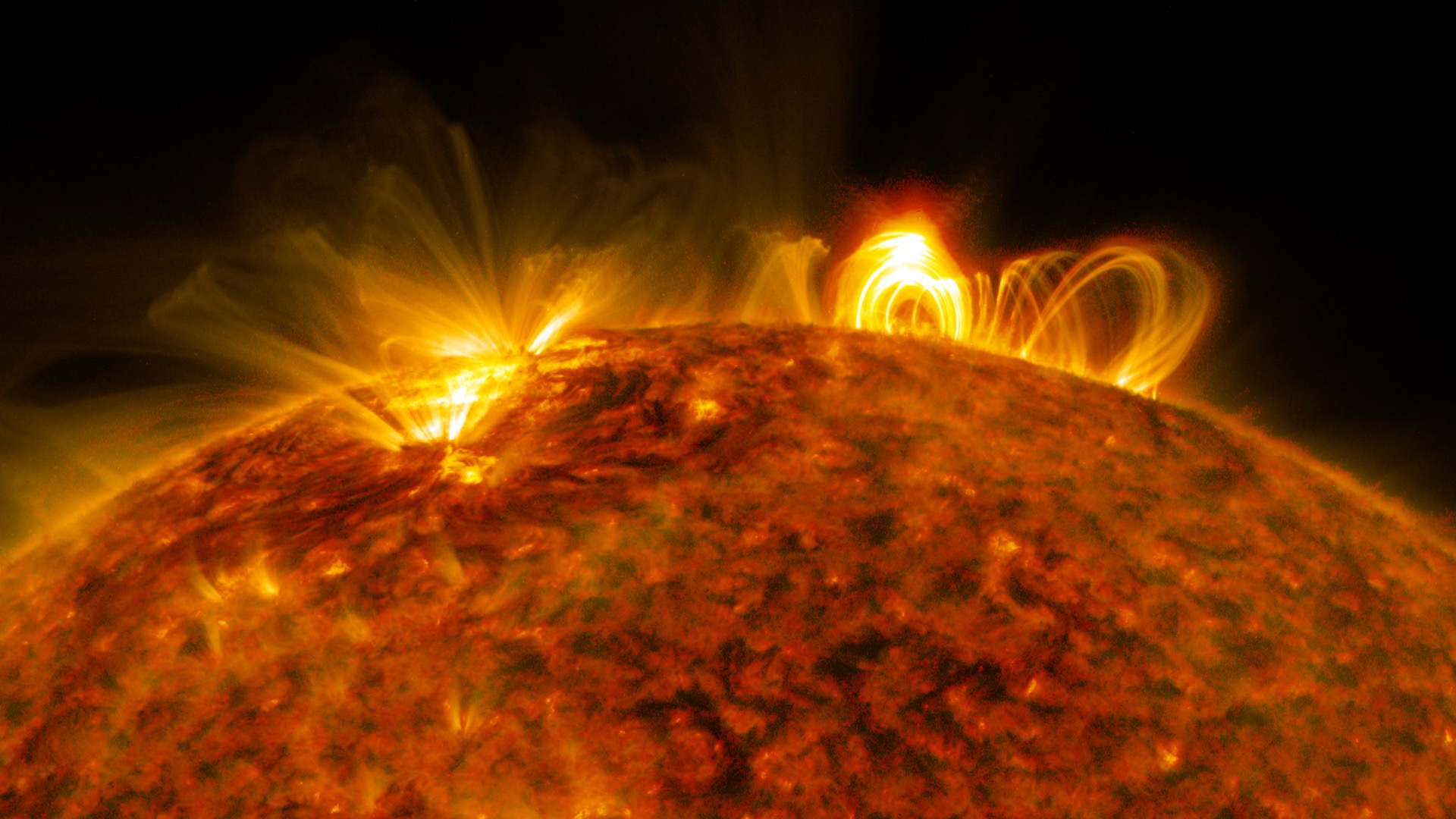
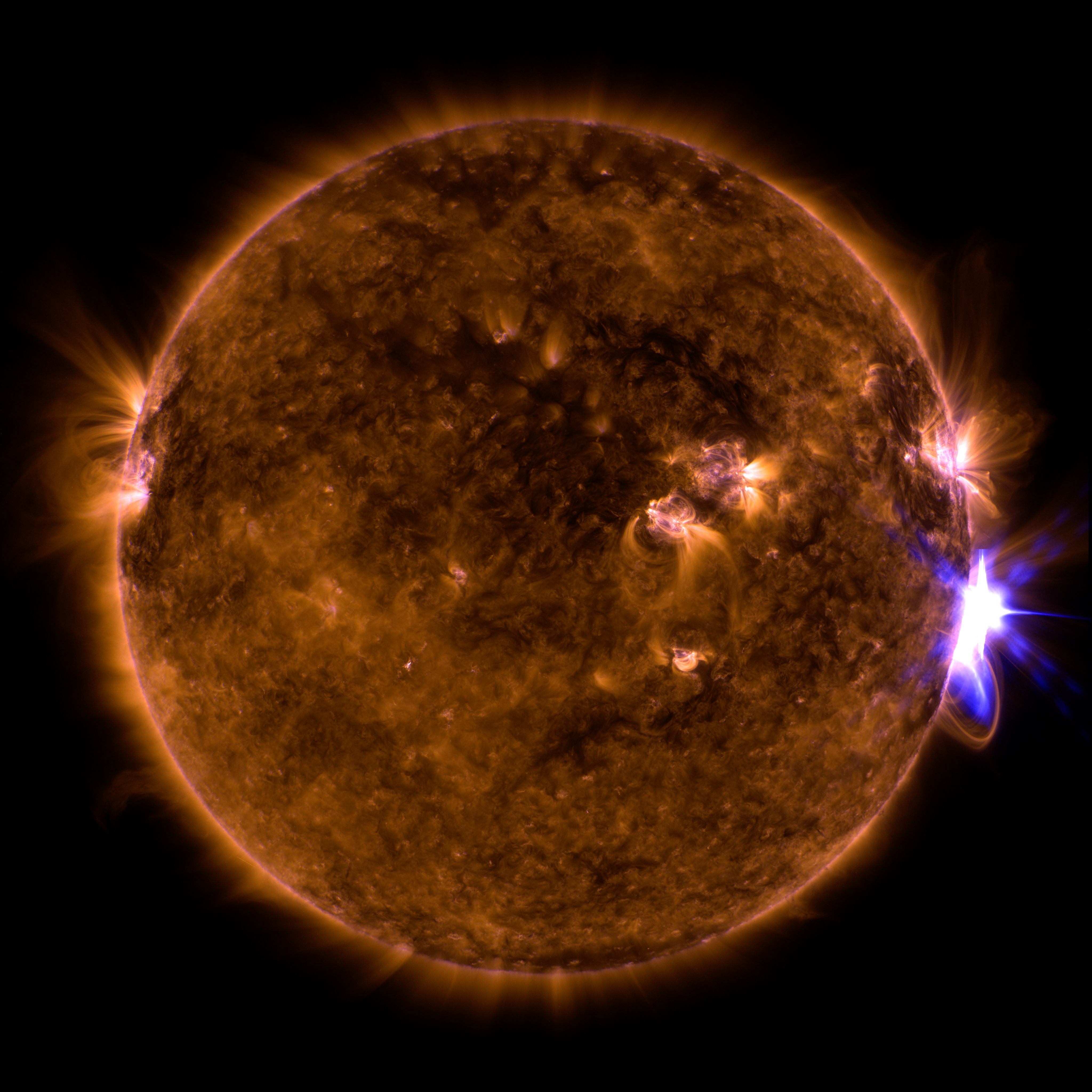
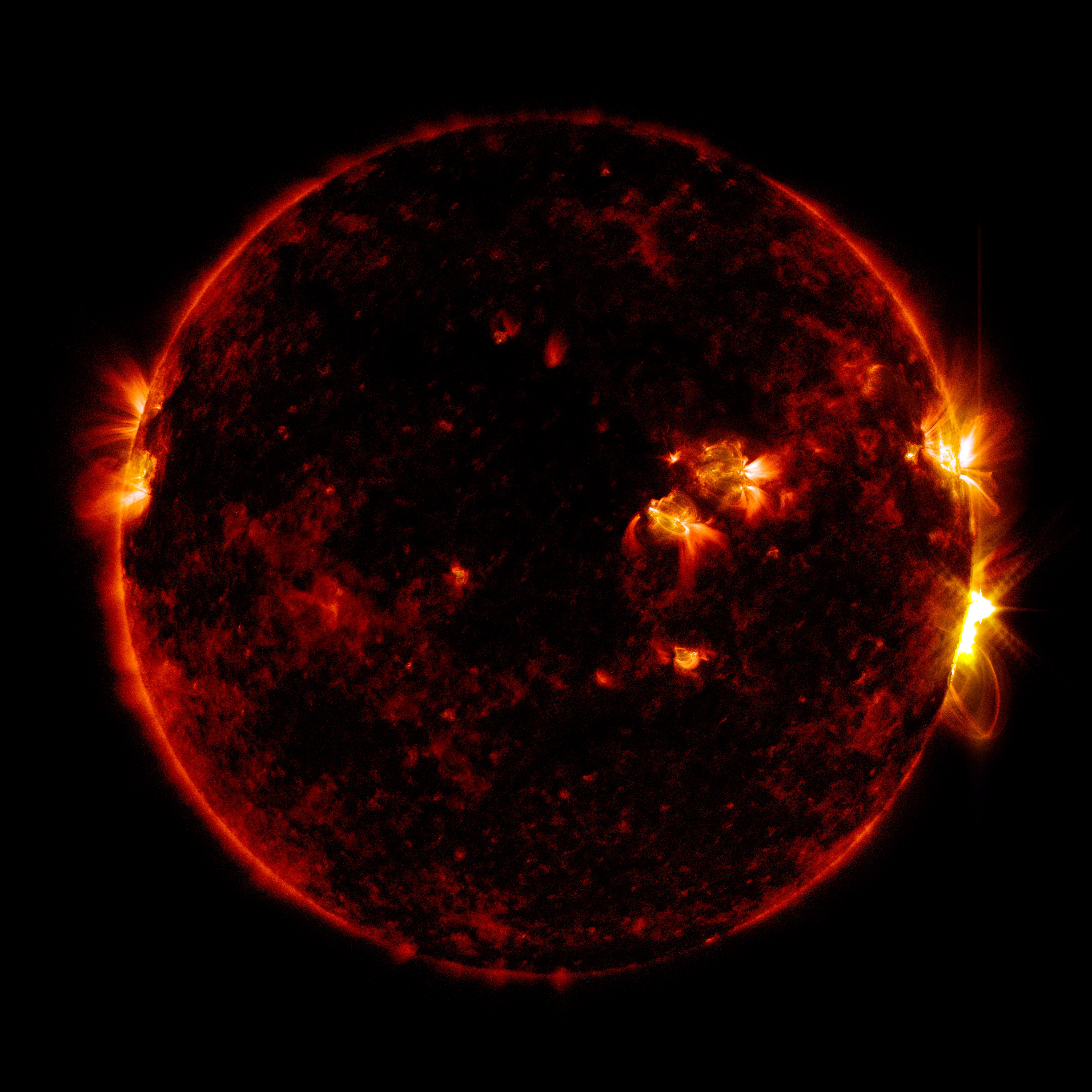
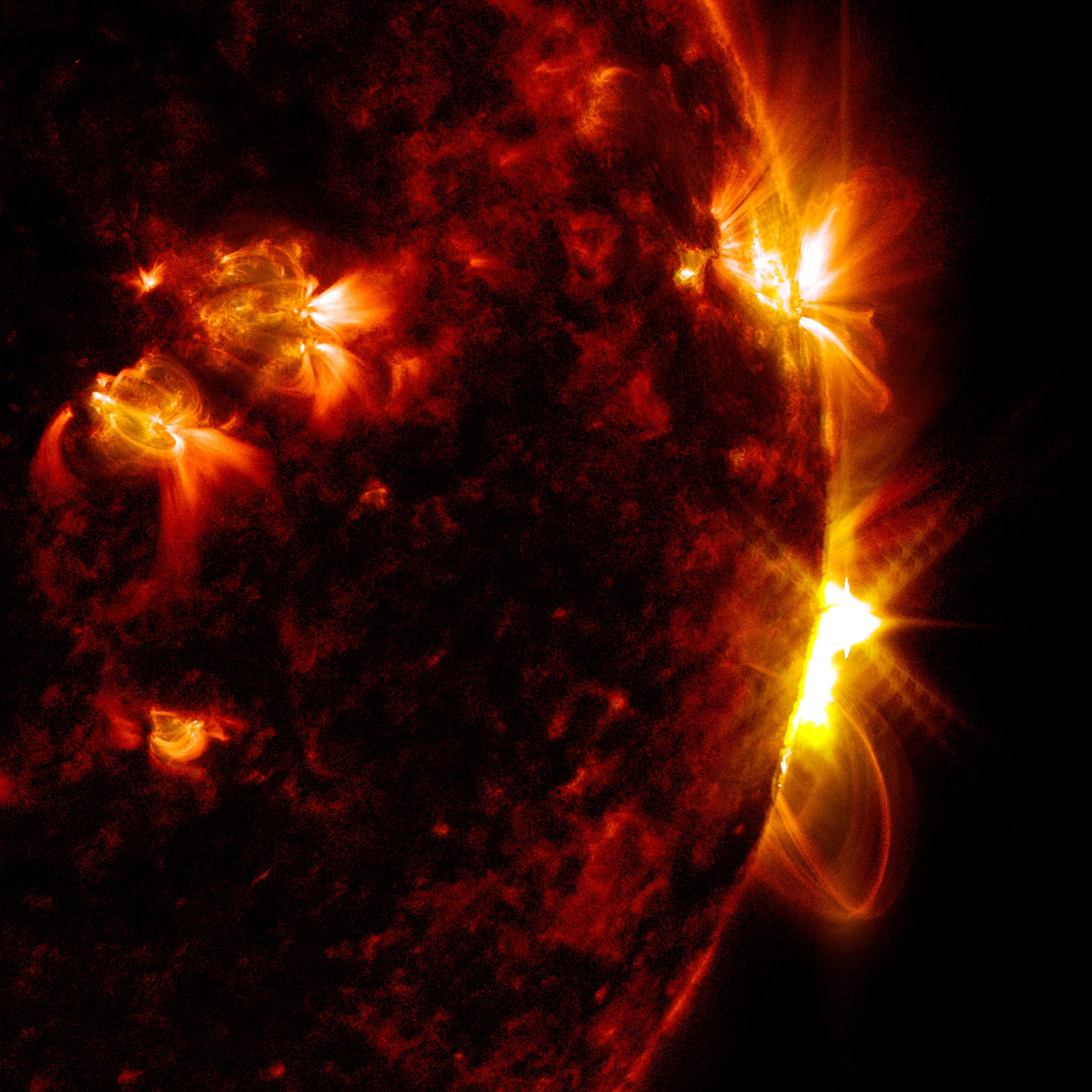

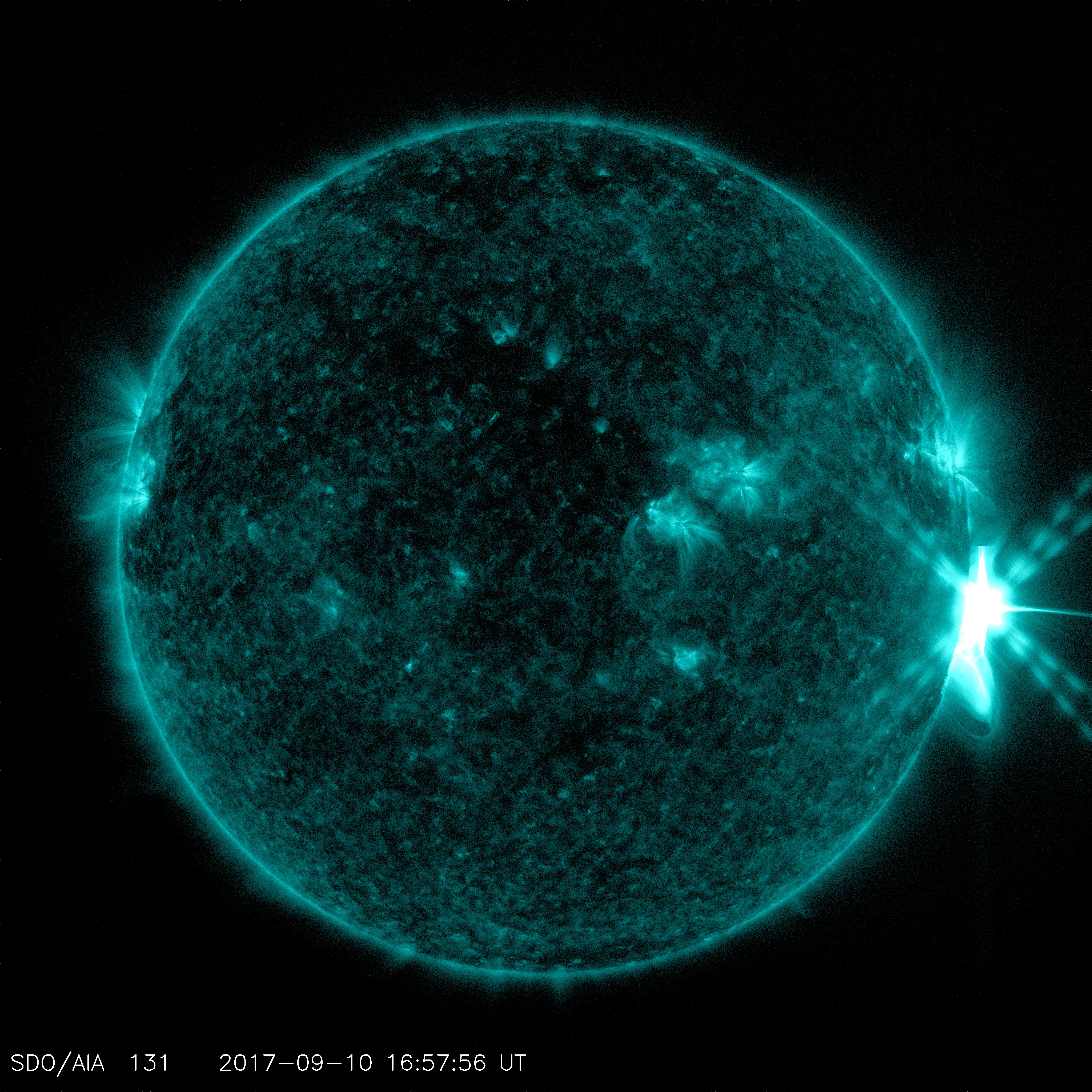
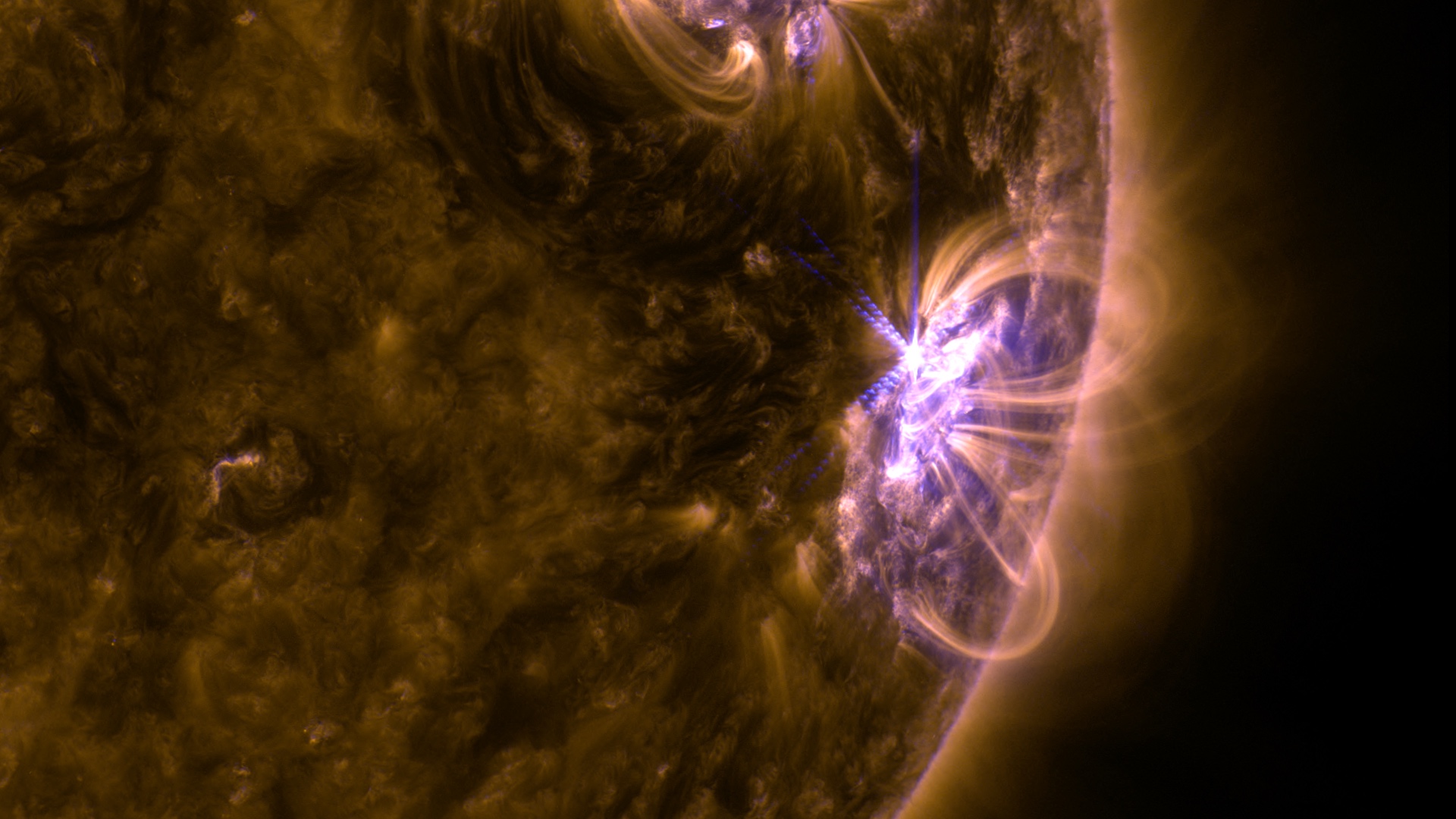
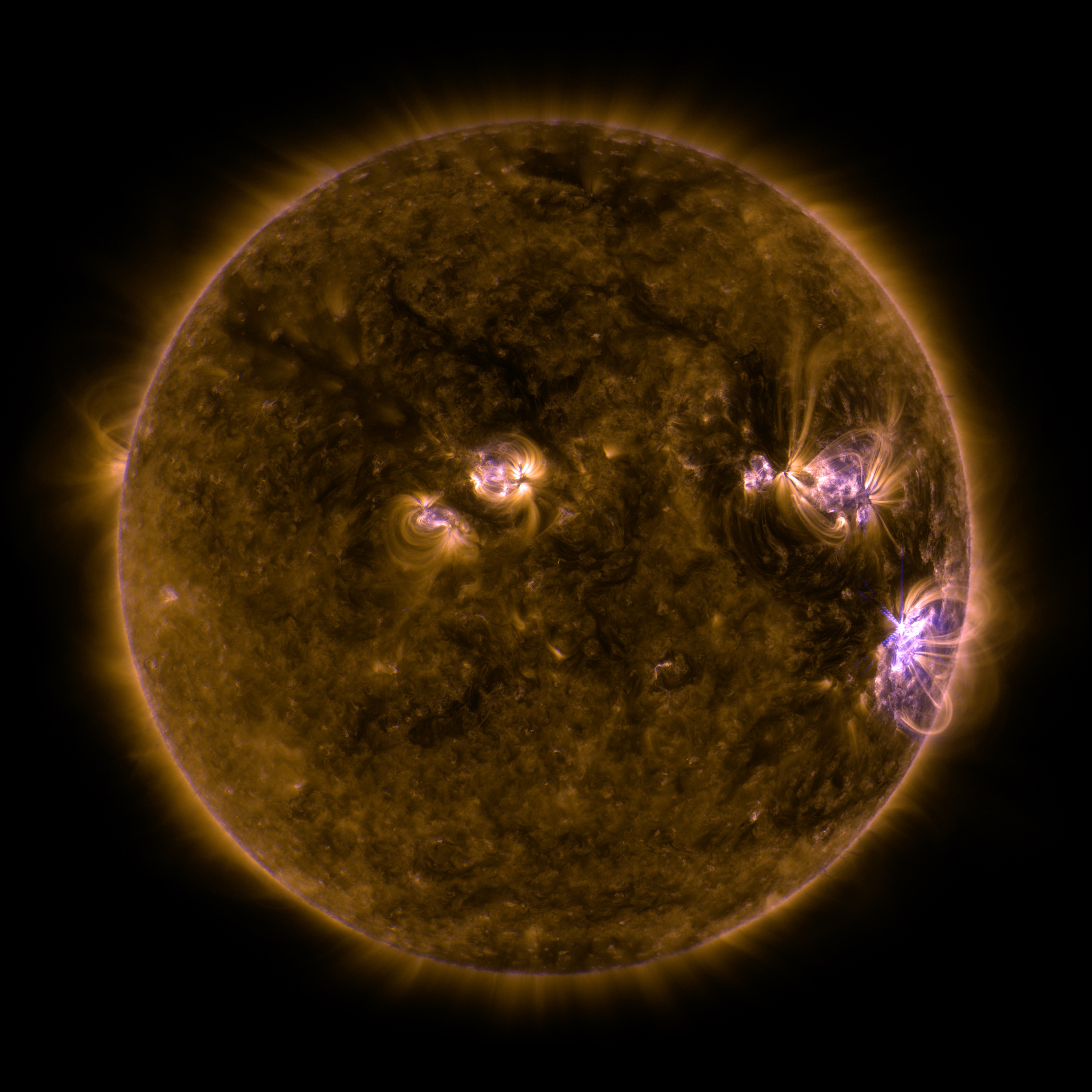
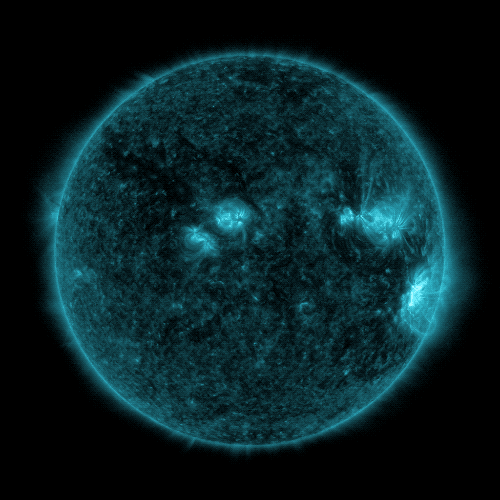
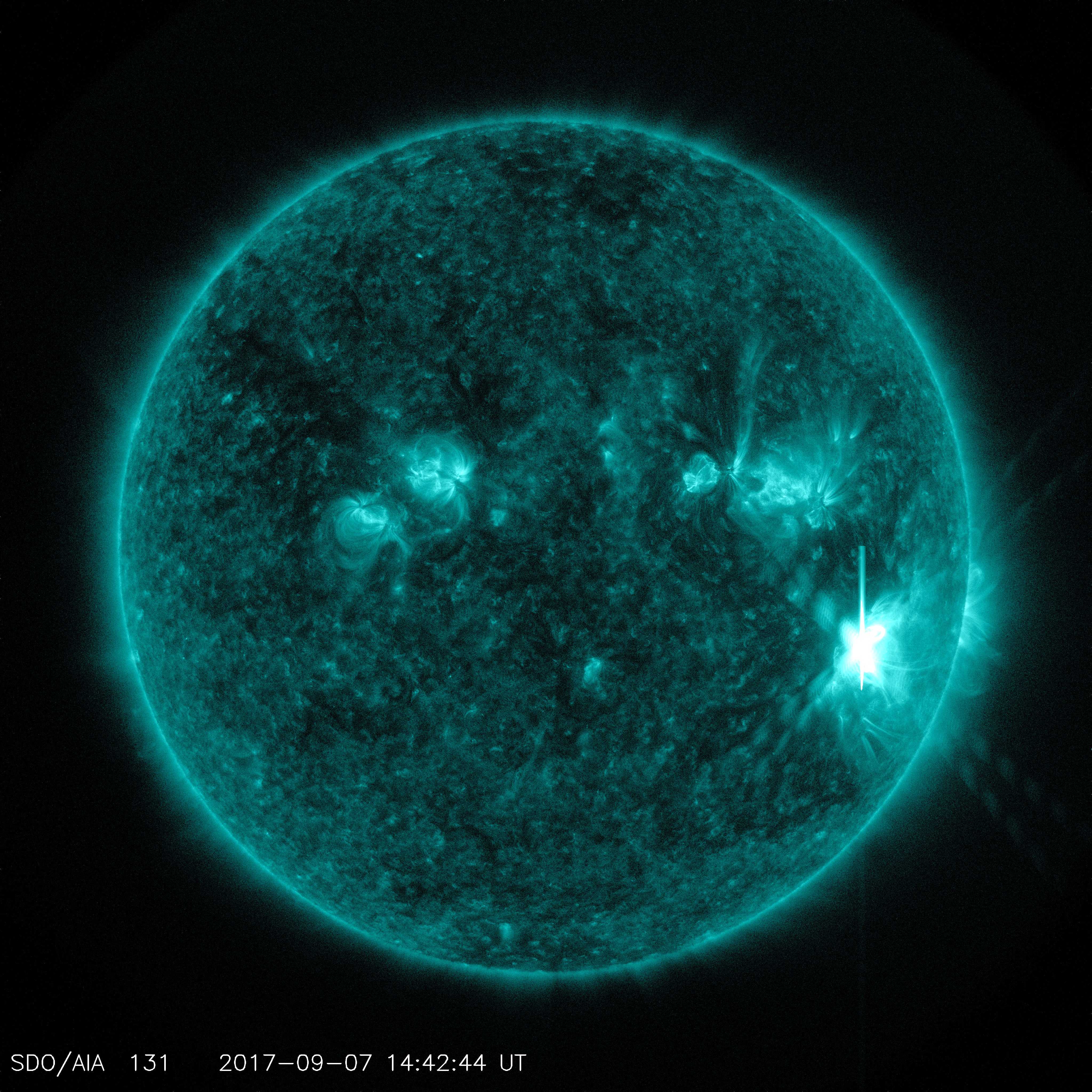

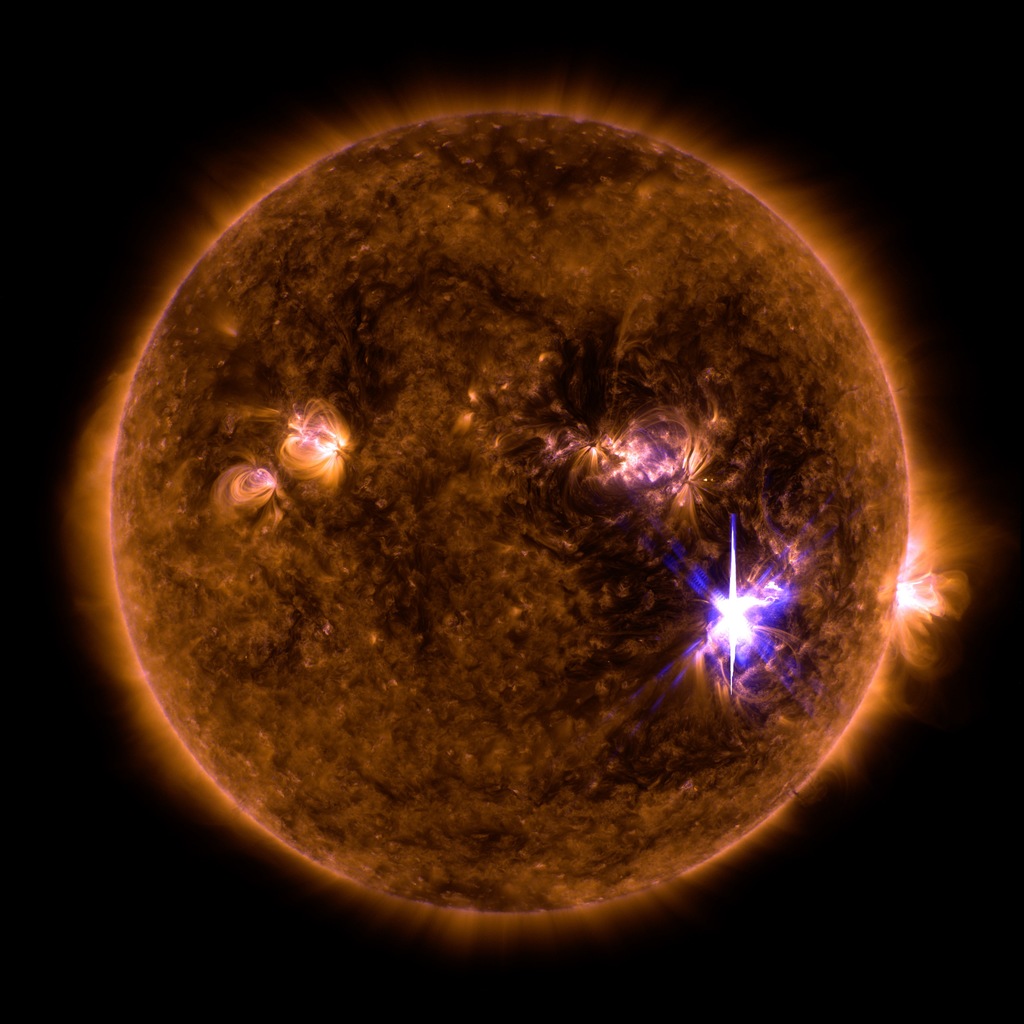
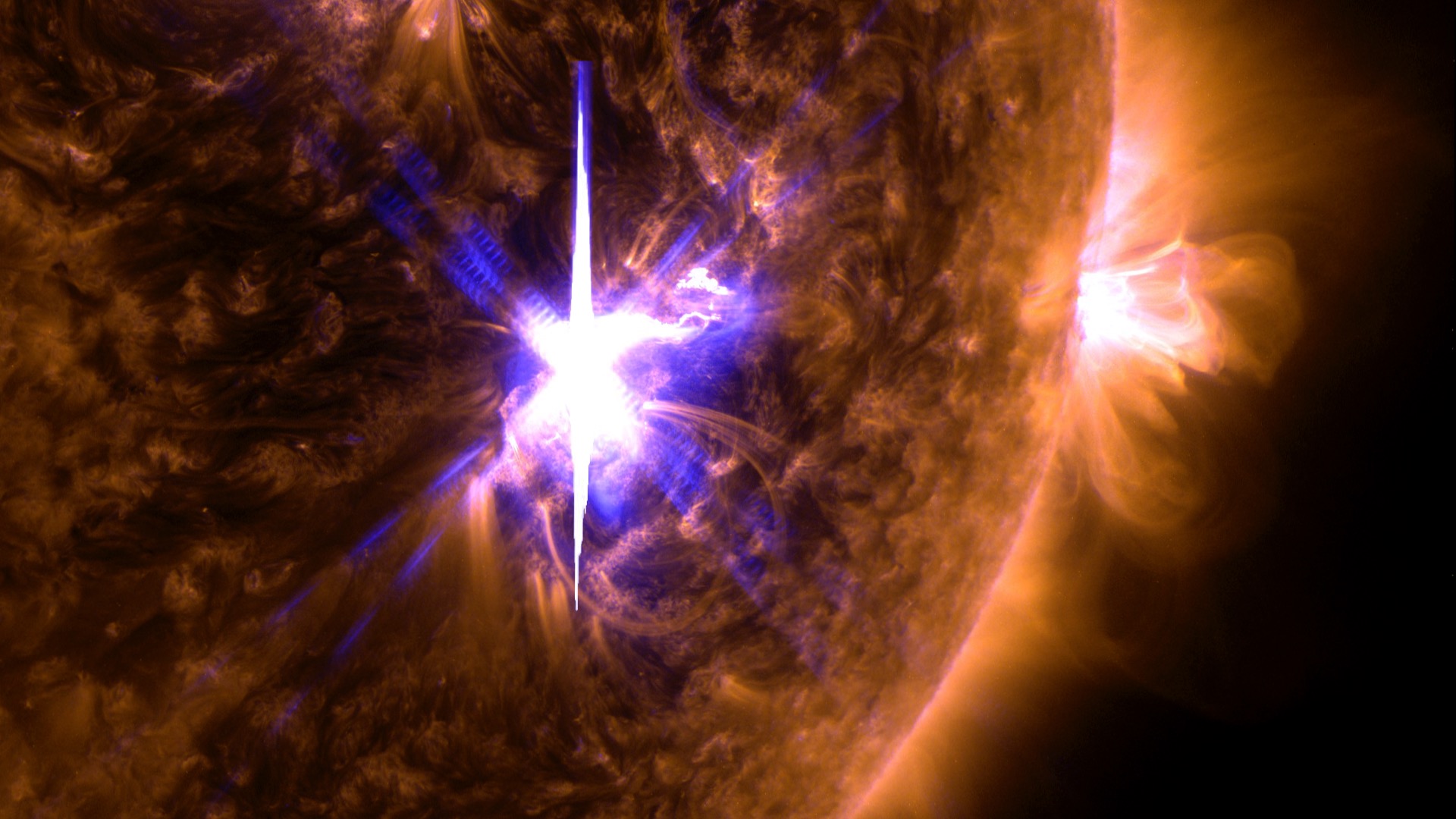
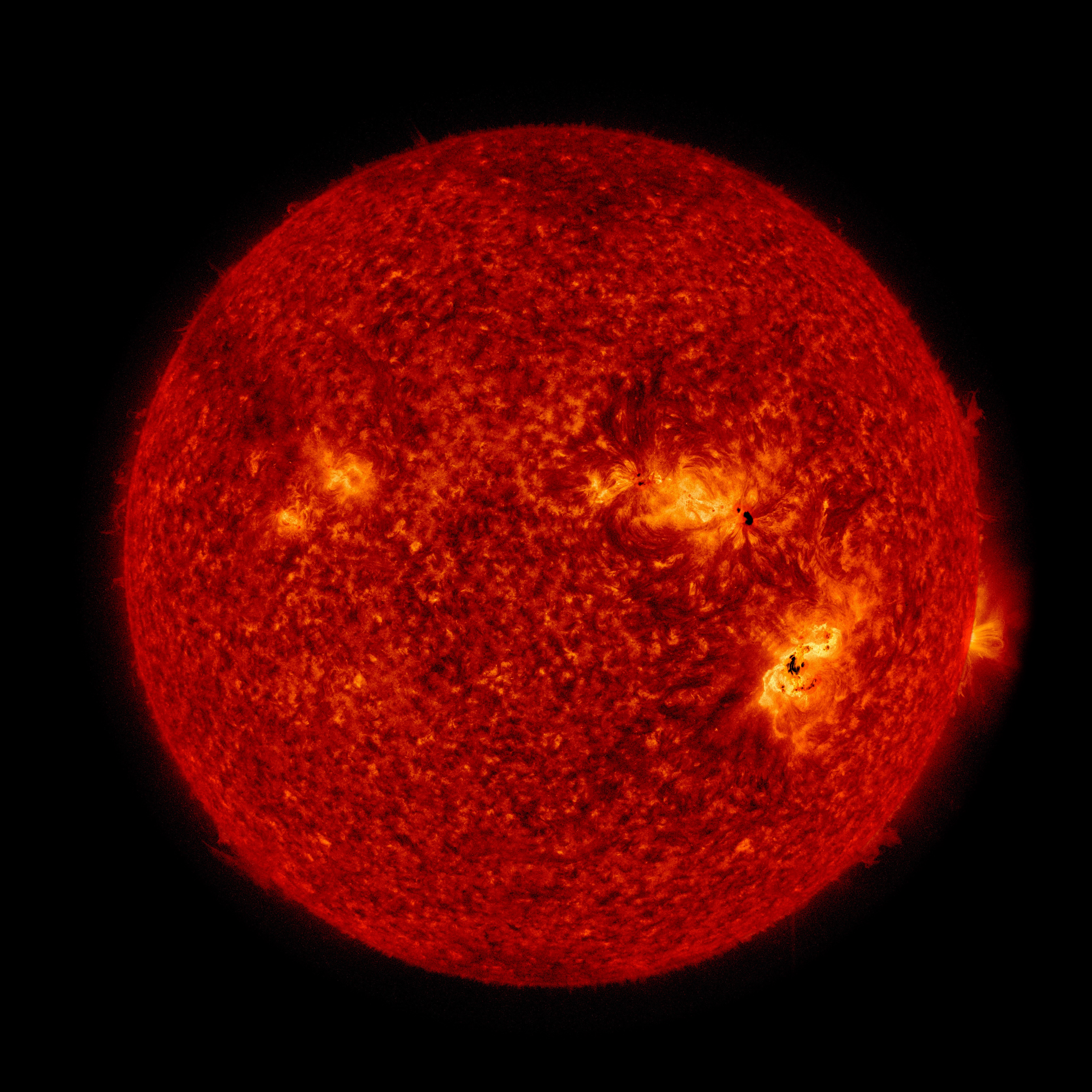

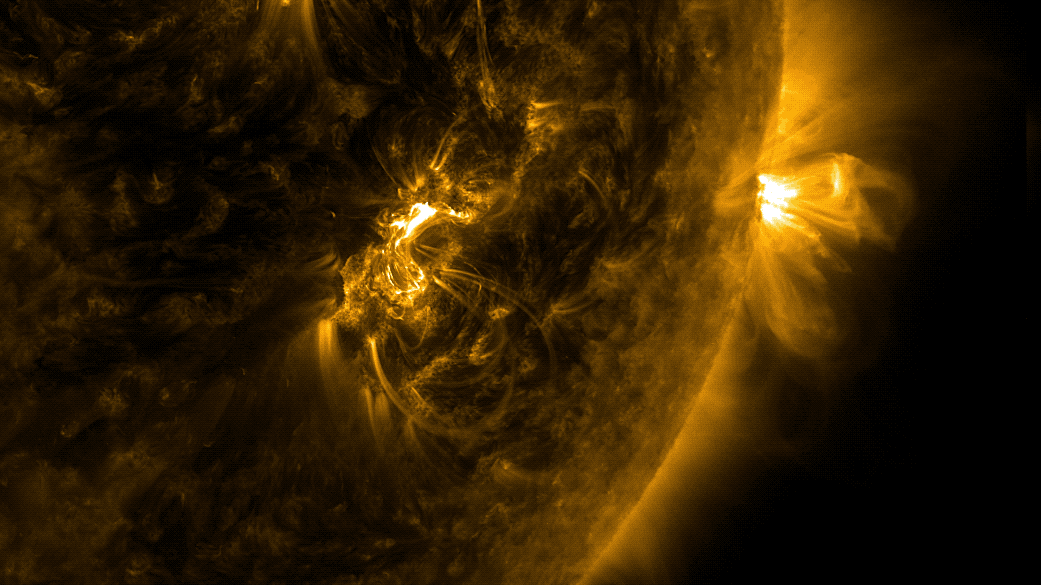
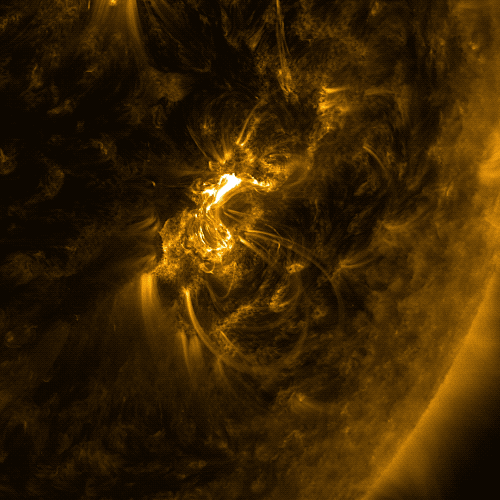
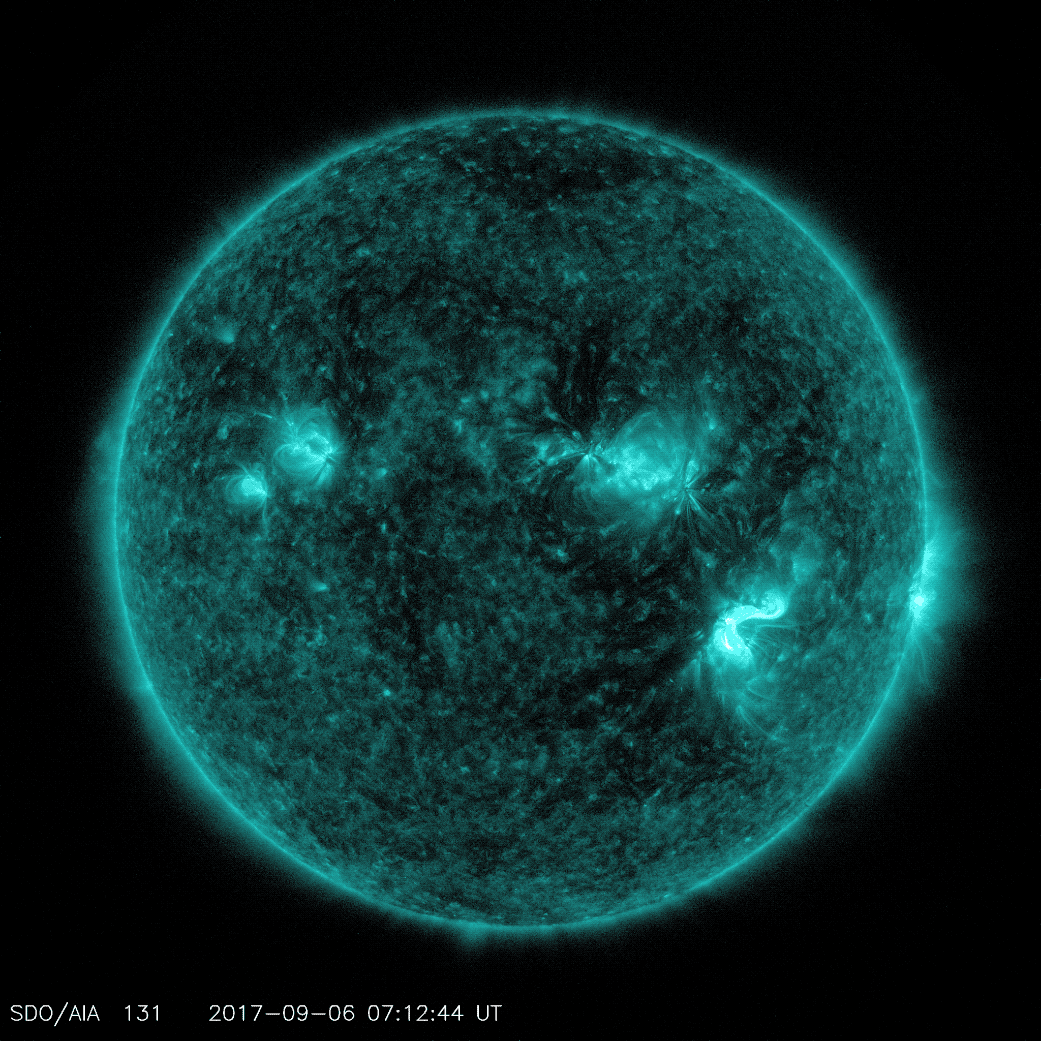
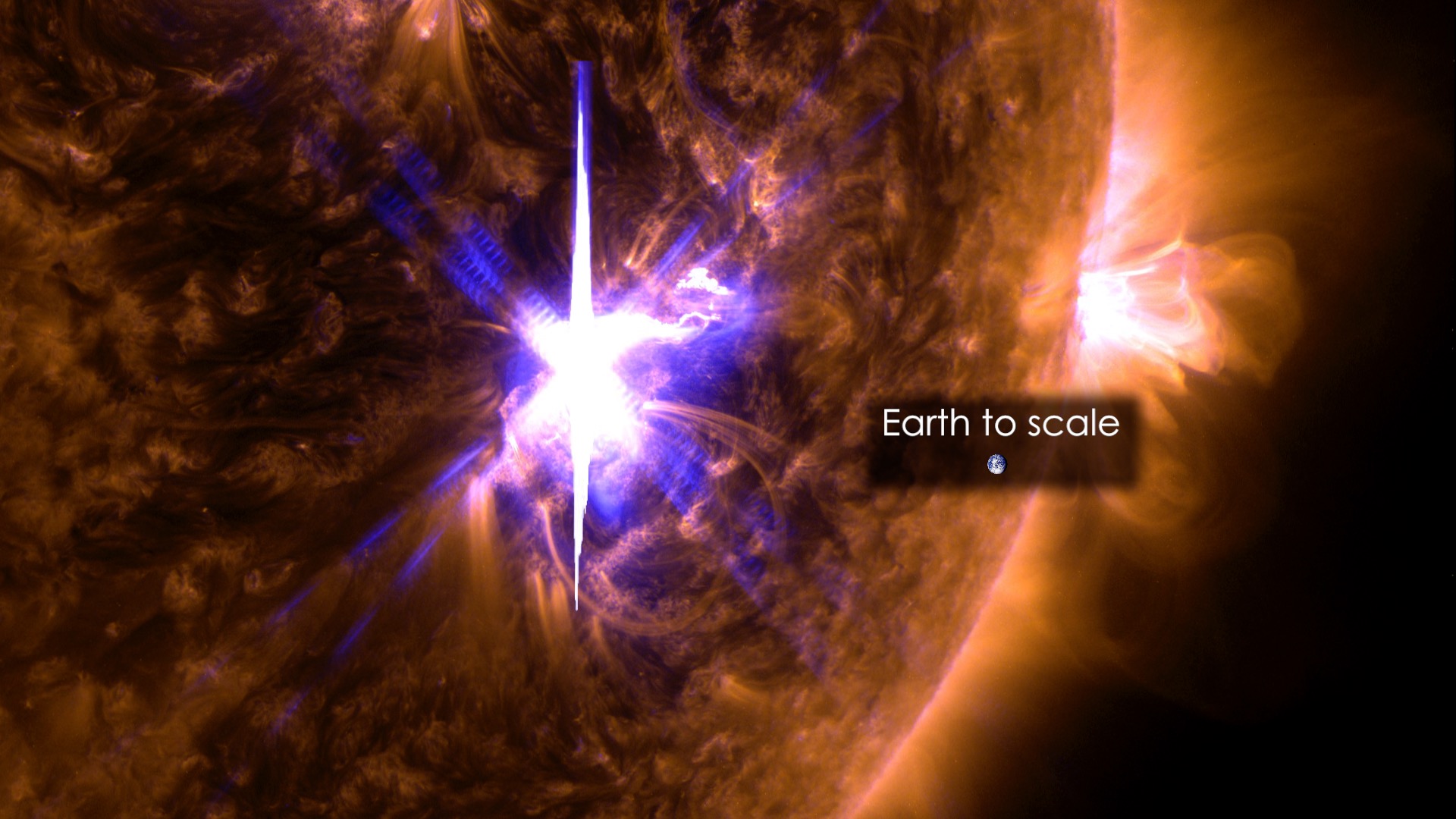



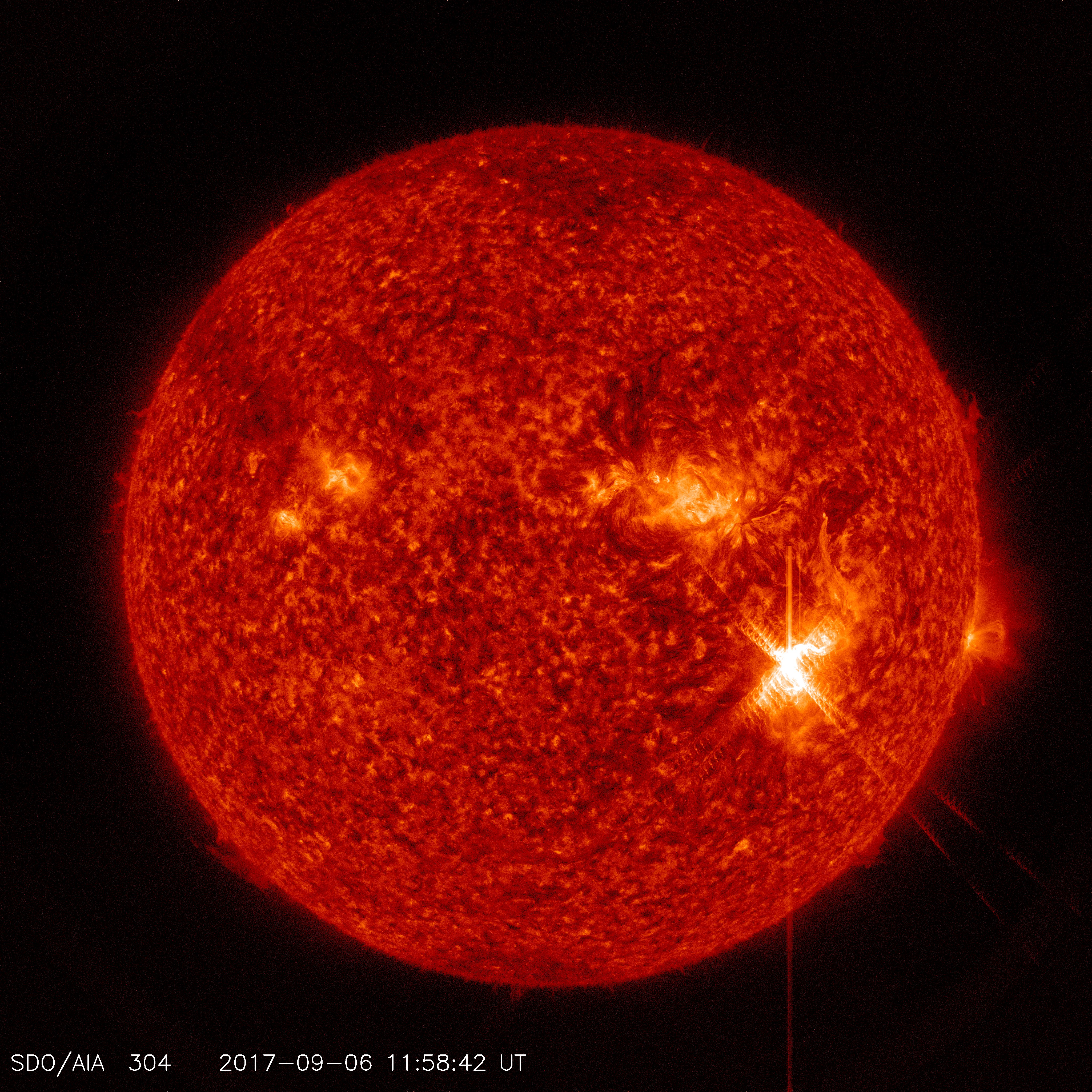
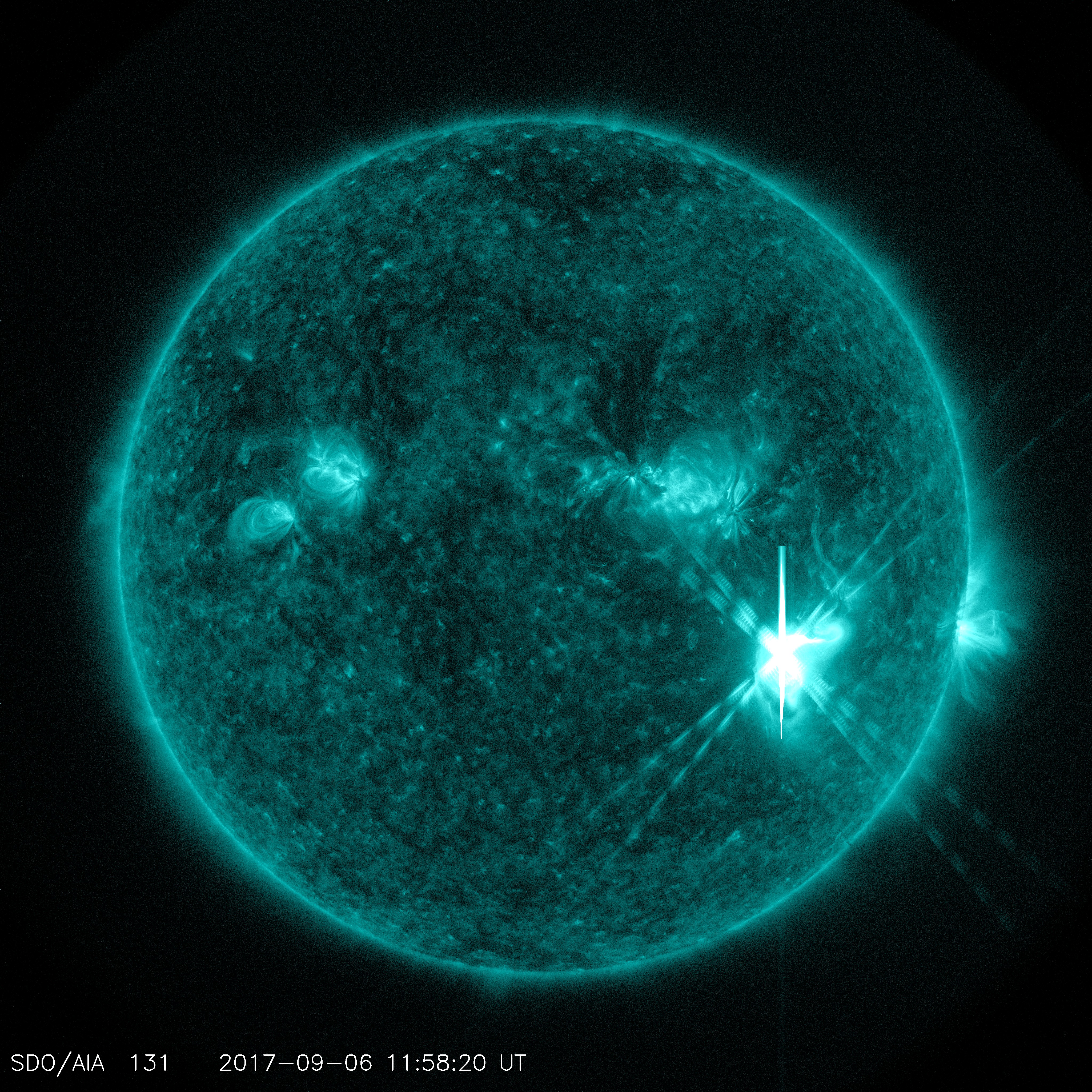
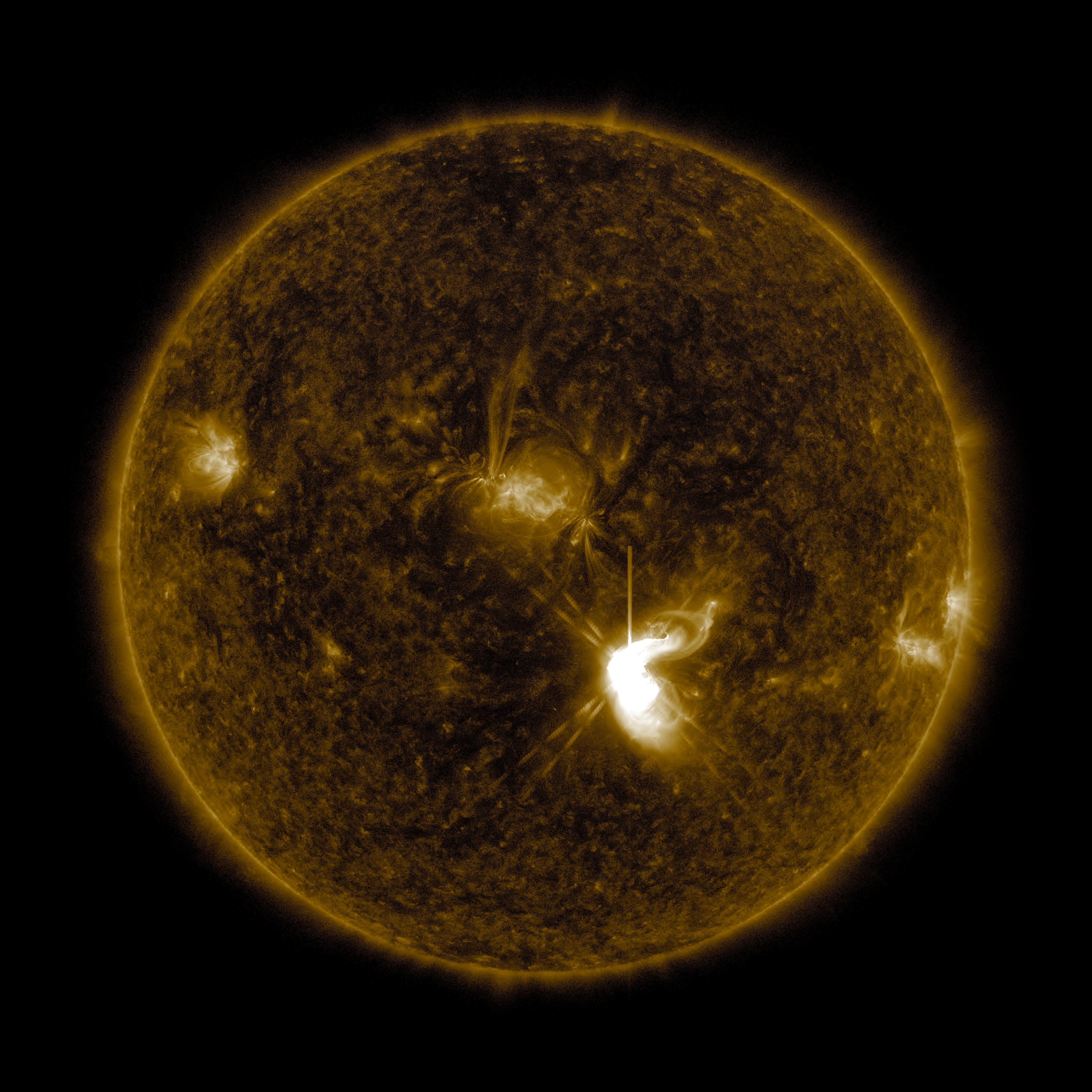
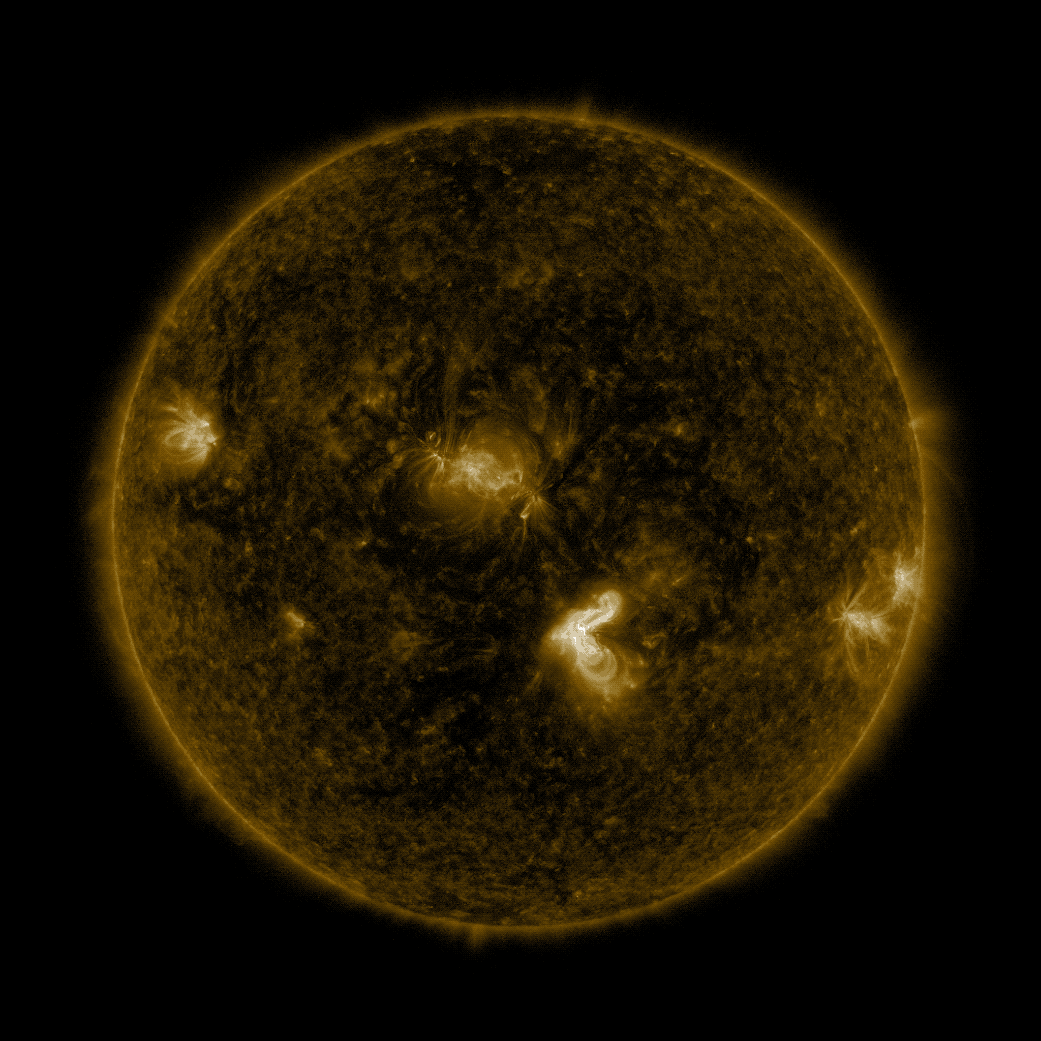
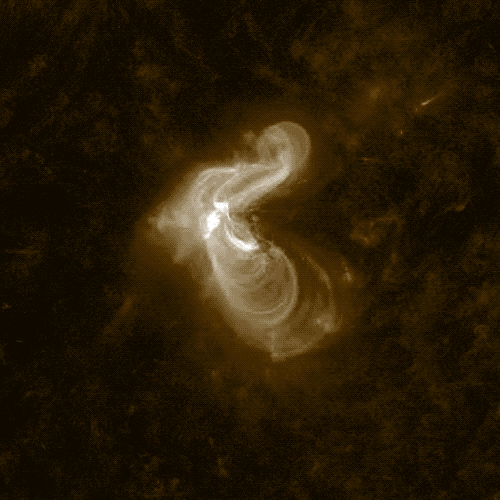
A Powerful Sequence of Flares Start September 2017
There is a newer version of this story located here: https://svs.gsfc.nasa.gov/4491
Active region 2673 emitted a series of flares in early September, 2017, including:
--an M5.5 at 4:33 p.m. EDT on Sept. 4, 2017
--an X2.2 at 5:10 a.m. EDT on Sept. 6, 2017
--an X9.3 at 8:02 a.m. EDT on Sept. 6, 2017
--an M7.3 at 6:15 a.m. EDT on Sept. 7, 2017
--an X1.3 at 10:36 a.m. EDT on Sept. 7, 2017
--an M8.1 at 3:49 a.m. EDT on Sept. 8, 2017
--an X8.2 at 12:47 p.m. EDT on Sept. 10, 2017
NASA’s Solar Dynamics Observatory, which watches the sun constantly, captured images of the events. Solar flares are powerful bursts of radiation. Harmful radiation from a flare cannot pass through Earth's atmosphere to physically affect humans on the ground, however — when intense enough — they can disturb the atmosphere in the layer where GPS and communications signals travel.
To see how this event may affect Earth, please visit NOAA's Space Weather Prediction Center at http://spaceweather.gov, the U.S. government's official source for space weather forecasts, alerts, watches and warnings.
X-class denotes the most intense flares, while the number provides more information about its strength. An X2 is twice as intense as an X1, an X3 is three times as intense, etc.
The X9.3 flare was the largest flare so far in the current solar cycle, the approximately 11-year-cycle during which the sun’s activity waxes and wanes. The current solar cycle began in December 2008, and is now decreasing in intensity and heading toward solar minimum. This is a phase when such eruptions on the sun are increasingly rare, but history has shown that they can nonetheless be intense.
September 10, X8.2





























Newer Version
Related
For More Information
https://www.nasa.gov/feature/goddard/2017/two-significant-solar-flares-imaged-by-nasas-sdo
https://www.nasa.gov/feature/goddard/2017/active-region-on-sun-continues-to-emits-solar-flares
Credits
Scott Wiessinger (USRA): Lead Producer
Aaron E. Lepsch (ADNET Systems, Inc.): Technical Support
Karen Fox (ADNET Systems, Inc.): Science Writer
Tom Bridgman (Global Science and Technology, Inc.): Visualizer
Aaron E. Lepsch (ADNET Systems, Inc.): Technical Support
Karen Fox (ADNET Systems, Inc.): Science Writer
Tom Bridgman (Global Science and Technology, Inc.): Visualizer
Please give credit for this item to:
NASA's Goddard Space Flight Center. However individual items should be credited as indicated above.
NASA's Goddard Space Flight Center. However individual items should be credited as indicated above.
Short URL to share this page:
https://svs.gsfc.nasa.gov/12706
Mission:
SDO
This item is part of these series:
Narrated Movies
Heliophysics Breaking News
Studies of the September 2017 Flares and CMEs
Keywords:
GCMD >> Earth Science >> Sun-earth Interactions >> Solar Activity >> Solar Flares
SVS >> Space Weather
SVS >> SDO
SVS >> Solar Dynamics Observatory
SVS >> Heliophysics
SVS >> Corona
NASA Science >> Sun
GCMD keywords can be found on the Internet with the following citation: Olsen, L.M., G. Major, K. Shein, J. Scialdone, S. Ritz, T. Stevens, M. Morahan, A. Aleman, R. Vogel, S. Leicester, H. Weir, M. Meaux, S. Grebas, C.Solomon, M. Holland, T. Northcutt, R. A. Restrepo, R. Bilodeau, 2013. NASA/Global Change Master Directory (GCMD) Earth Science Keywords. Version 8.0.0.0.0
https://svs.gsfc.nasa.gov/12706
Mission:
SDO
This item is part of these series:
Narrated Movies
Heliophysics Breaking News
Studies of the September 2017 Flares and CMEs
Keywords:
GCMD >> Earth Science >> Sun-earth Interactions >> Solar Activity >> Solar Flares
SVS >> Space Weather
SVS >> SDO
SVS >> Solar Dynamics Observatory
SVS >> Heliophysics
SVS >> Corona
NASA Science >> Sun
GCMD keywords can be found on the Internet with the following citation: Olsen, L.M., G. Major, K. Shein, J. Scialdone, S. Ritz, T. Stevens, M. Morahan, A. Aleman, R. Vogel, S. Leicester, H. Weir, M. Meaux, S. Grebas, C.Solomon, M. Holland, T. Northcutt, R. A. Restrepo, R. Bilodeau, 2013. NASA/Global Change Master Directory (GCMD) Earth Science Keywords. Version 8.0.0.0.0
